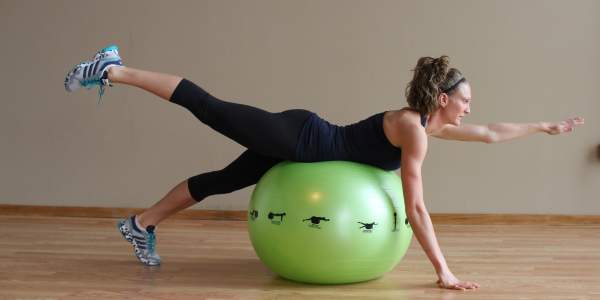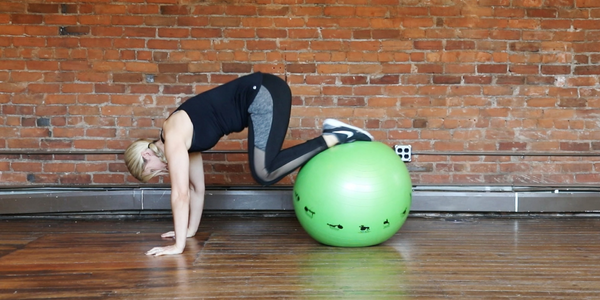When it comes to enhancing your fitness game, have you considered the power of a stability ball? These bright, inflatable orbs might seem simple at first glance, but they pack a punch in terms of versatility and effectiveness. Stability balls are not just for gymnasts or physical therapists; they’re an engaging tool that can transform the way you approach your workouts. Whether you’re looking to spice up your routine or delve deeper into yoga ball exercises that challenge your abdominal muscles, this humble piece of equipment may be the missing ingredient you’ve overlooked.
Core strength is foundational to overall health and incorporating the right size stability ball core exercises can be a great way to challenge your deep core muscles. From engaging your rectus abdominis to activating your hip flexors, stability balls offer a proper form workout that enhances your balance and prevents injuries. By working your core musculature in core-strength exercises, you’re able to elevate your fitness levels and support everyday movements.
Understanding Core Muscles

Your core muscles, including the rectus abdominis and deeper layers like the transverse abdominis, provide stability and support for everything you do. Incorporating a medicine ball into your routine is a great tool that can target these muscle groups while improving core stability. Without a strong core, even simple tasks like lifting groceries or bending down become challenging, leading to potential low back issues.
Achieving good form in core exercises involves more than just basic crunches. You can try stability ball crunches or even the ab toss roll-up to strengthen core musculature and boost your endurance. Working out with a yoga ball adds variety to your routine, focusing on muscle engagement, such as keeping your shoulder blades and hips level while maintaining a neutral position.
Enhanced Core Activation

Using a stability ball increases your body’s need to stabilize, working the lumbar spine and pelvic floor in ways traditional exercises don’t. For example, performing medicine ball plank or hip extension hamstring curl exercises on a ball can significantly enhance core stability while activating entire body muscles. Your right arm and left leg work harder to maintain a straight line, which increases your ability to hold a high plank position.
Try exercises like stability ball side planks to test your fitness level and develop better balance. Switching from right side to left side builds core stability as you control your body’s weight. Using a smaller ball or focusing on less weight for certain moves like medicine ball exercises can reduce the difficulty of the exercise and help with balance.
Improved Balance and Stability

Stability balls provide an excellent way to improve balance. Exercises like leg tucks or stability ball lunge help activate your rib cage and hip flexors, keeping your hips level and back straight during each movement. By working on keeping your opposite knee and opposite side engaged, you train your body to stay balanced. Certified trainers often recommend these exercises to promote balance and prevent injury.
Incorporating dynamic movements can make balance training even more effective and enjoyable. Exercises like the stability ball lunge or alternating shoulder press while balanced involve engaging various muscle groups simultaneously, demanding greater focus and control. This works wonders on both physical stability and mental concentration—a true two-for-one! You might find yourself getting stronger each time you step onto that wobbly sphere, paving the way for improved agility whether you’re dodging obstacles during a run or helping lift heavy objects at home.
You’ll also benefit from working smaller, stabilizing muscles that don’t get much attention in traditional routines. Exercises like front of your chest presses and standard push-ups using a ball provide unique challenges that engage the entire time you’re exercising.
Injury Prevention and Rehabilitation

Using a stability ball is also excellent for injury prevention and rehabilitation. People with back problems or health concerns can try exercises like stability ball crunches or hip thrusts to gently strengthen their pelvic floor and low back without overstraining. Even personal trainers use these tools to help clients avoid injury while engaging their body weight during exercises.
Stability balls are also helpful for recovery. For example, New York City athletes recovering from injury often incorporate core-strength exercises and stability ball side planks into their regimen for rehabilitation. By gradually increasing the difficulty of the exercise, athletes can restore their functional fitness.
Boosted Flexibility and Posture

Stability balls aren’t just for strength training—they can significantly enhance flexibility and improve posture too. Incorporate moves like switch sides on a ball for greater flexibility or use the ball to stretch hip flexors and elongate the lumbar spine. These exercises not only target your deep core muscles but also improve posture by strengthening the muscles around the rib cage and shoulder blades.
Embracing the versatility of stability balls enhances both flexibility and posture in ways that most gym-goers may overlook. The foundation they provide encourages mindful movement which translates into daily life activities—be it standing tall during meetings or picking up groceries without straining yourself. So why not seize the opportunity? Unlock new levels of flexibility and bolster your posture by incorporating this lively fitness tool into your routine!
Creating a Balanced Routine

Incorporating stability ball exercises into your fitness regimen isn’t just about one aspect of training; it’s about creating a balanced routine that promotes overall strength, cardio endurance, and flexibility. Start by identifying where stability balls can fit into your current workouts. For instance, you might substitute traditional ab workouts with stability ball variations like the roll-out or the wall squat, which enhance core activation while also challenging other muscle groups. This shift not only adds variety but also makes your workouts more engaging and dynamic.
To create a balanced workout, integrate exercises like the medicine ball plank or Swiss ball circle to push your limits while maintaining good form. Focus on keeping your tops of your feet in place and straight legs aligned, allowing you to increase intensity gradually. These stability ball exercises can take your training to the next level, blending traditional movements with dynamic core work.
Lastly, keep track of how each component contributes to your progress toward your fitness goals. Adjust accordingly if you find certain areas lacking focus—for instance, if balance is something you’ve struggled with during leg workouts, highlight specific exercises like stability ball single-leg lunges at least once a week. By recognizing how various aspects of working out interconnect through incorporating different modalities like the stability ball, you’ll create a rewarding routine that keeps you motivated on your journey toward optimal health and performance!
Conclusion: Embrace the Power of Stability Balls
Incorporating stability ball core exercises, medicine ball plank variations, and hip thrusts into your routine will challenge your fitness level and improve balance, strength, and core stability. This versatile tool can revolutionize your workouts by strengthening your rectus abdominis, engaging entire body muscles, and offering a great way to maintain good form throughout each exercise.
Don’t miss out on the best way to improve your fitness journey—grab a stability ball and start transforming your workouts today!








One Comment